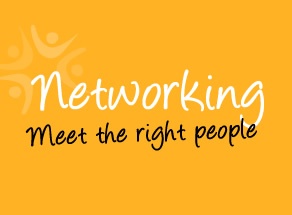
The Enigmatic “It” Factor: We All Got It, So Sell It
05/15/2015 11:31AM | 7384 viewsIn my professional career, I have always been the type of person who worked diligently, produced good work, and excelled in my roles. I always assumed that by doing a great job I would automatically be rewarded, promoted, and given that coveted pat on the back. After all, weren’t we always taught – especially women – that good things come to those who wait? So why was it that individuals in the workplace, who were inept and inefficient at their jobs, somehow move up the corporate ladder and succeed time and time again? Believe me, I have experienced my share of this and have always had the same question pinging in my head. Does the leadership not see what seems so clear to me?
As the years have passed, it finally dawned on me that these individuals were actually quite astute and strategic. Whatever skills and abilities they lacked they made up for in presentation, in the ultimate sale. They had the “it factor.” Suffice it to say, it rarely mattered that they could not really execute nor deliver because they usually found someone on their teams who could. With these experiences in mind, I decided that instead of focusing on the inequality of these situations that I should turn my attention inward. What could I change about how I presented myself to my colleagues, my boss, and potential employers? After all, this was an important variable I could control. What was my “it factor”? What was my brand?
Now, these weren’t questions that were easy to answer especially because I am a woman and a Latina at that. Self promotion is not something your Mami or your Abuela teaches you. So when I lost my job in March of this year, with a mortgage, two kids under five, daycare/preschool expenses, and a family member with significant health issues, I couldn’t afford to think that I was anything less than a superstar. At a moment in time, where I might have been squashed, I had to instead lift myself up literally and figuratively. I had to rise. It’s this frame of mind that propelled me forward as I walked through the Department of Labor’s glass doors to file my paperwork along with the other 12.5 million who applied for unemployment benefits this past April.
It turns out that I was more fortunate than I had first realized. Because in my last job (the one I lost) I was tasked with building relationships with organizations, businesses, and individuals, I had learned rather quickly how to make friends and most importantly how to connect the dots. As you well know, networking is key component in your job search. I think the stat is that 80% of the jobs are unadvertised. You might be thinking how will I find these contacts? Find these secret jobs? Well, I am here to tell you that networking alone will not get you where you want to be. That being said, it’s really the art of networking and how to extrapolate it to other situations that can really aid you in landing a great job.
If you take this idea and marry it with the understanding that you are a brand and can control how you are marketed, then you can start promoting yourself through different channels. We live in an amazing time in which we can access a plethora of information and connect to individuals all over the world in seconds through the Internet. One of my great career resources has been LinkedIn (love this site! I visit it more than Facebook). I used this to research individuals in different companies, join groups in my field, and most importantly position my brand. Sell Marisa. In addition to my LinkedIn profile, I capitalized on creating my own website where I could showcase my accomplishments, projects, awards, etc. You can easily do the same with an affordable yet incredibly professional template you can purchase online.
Let’s recap. If you are on the job hunt, you need to figure out what your “it factor” is. Network with your contacts not just about job leads but instead candidly tell them about your dreams, your skills, and your passions. It’s this process that will help you understand who you are as professional. Further, capitalize on online tools such as LinkedIn, Twitter, and Facebook to broadcast the superstar that you are and sell your brand.
Here are my top recommendations to using LinkedIn as your online calling card.
1) Contacts: Build up your network and connections by seeking out individuals who are in similar fields, contacts you have met at business functions, etc. You want to strive to get the “500+” designation.
2) Profile: SEO the heck out of your LinkedIn profile. What I mean by this is, look at other profiles of individuals in your field. See how they describe themselves in the summary, key skills, and experience sections. Select specific key words related to your industry and pepper your profile with them so that it’s easier for recruiters to find you.
3) Summary: This means simple. No more than two paragraphs summarizing who you are as a professional.
4) Headline: Make sure it’s an attention grabber and not just your current or past job title. Make it descriptive to highlight your abilities.
5) Recommendations. Reach out to past and current colleagues and supervisors who would be willing to endorse your work. Request that they be specific to projects and programs you worked on and your successes. Again, the more descriptive the better. Aim for about 10 recommendations and make sure to spread them out over time so you don’t have five recommendations posted in one day. (If you are currently employed it might arouse suspicion).
6) Groups: This is a great tool on LinkedIn to meet other people in your field or other professions you would like to explore. Think of it as “cyber networking.” Seek out those groups that have at least 1,000 or more members. Surprisingly there are many VPs and C-level executives in these groups. It’s a great opportunity to connect with them through the group and try to get your foot in the door. Remember to actively participate in group conversations and contribute interesting information.
7) Companies: If you have applied online for a job at a company, the honest truth is that your resume – even if you are highly qualified – may be overlooked by HR departments and the automated screening process. Your approach should be two pronged. Apply online and then conduct a search on LinkedIn for the company and titles of individuals you might report to (the hiring manager). Once you find it (there may be several), then do an Internet search for their company and email address. Send them a direct email and express your interest in the open position you saw posted. Trust me, this works more often than not. Don’t be afraid to seem “too aggressive.” As a woman and a Latina, this was probably my biggest challenge.
8) Languages: If you can speak more than one language, even if it’s only to order in a restaurant, ask where the bathrooms are, or provide a cab driver with directions, put it down on your profile. It helps showcase that you understand other cultures , have traveled, and can work in an international environment.
9) Profile photo: Yes, it may seem more appropriate for Match.com; however, people are social beings. They want to see what you look like. (You'll notice I have included my photo in this blog at the top.) Many companies and recruiters will skip your profile if you don’t have one.
10) Awards/Volunteer Boards/Causes/Professional Affiliations: This is a great opportunity to include information that you may not ordinarily include on your resume. It will help give individuals a more complete picture of who you are as a professional and as a person. Hiring managers hire people they like.
In the end, losing my job was the best thing that ever happened to me. I wouldn’t change a thing. It forced me to realize that you are your best marketer, and it’s not enough just to be good at what you do. You have to be great at selling you.






Post your Comment
Please login or sign up to comment
Comments